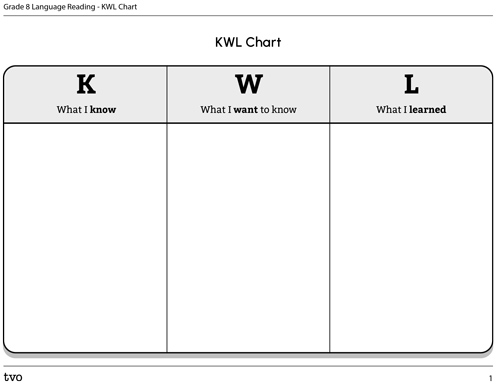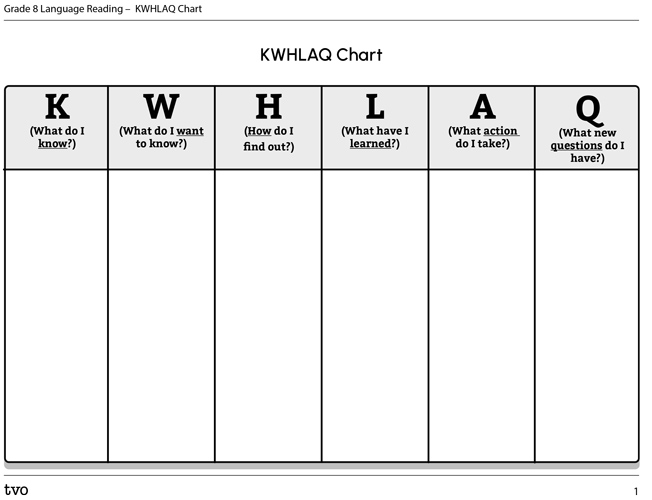Minds On
What is a KWL chart?

Student Success
Think-Pair-Share
Consider the following question:
- What is a KWL chart and where might you have noticed one before?
With a partner, if possible, record ideas about what a KWL chart is and where you may have accessed one in the past. If you have never used a KWL chart, please refer to the example and predict what this graphic organizer might be used for.
Note to teachers: See your teacher guide for collaboration tools, ideas and suggestions.
Using KWL charts
Using the KWL Chart, determine and record what you know and what you want to know about the topic of the Trappist-1 Exo-Planetary System. You can also complete this activity in your notebook or use another method of your choice.
| K What I know |
W What I want to know |
L What I learned |
|---|---|---|
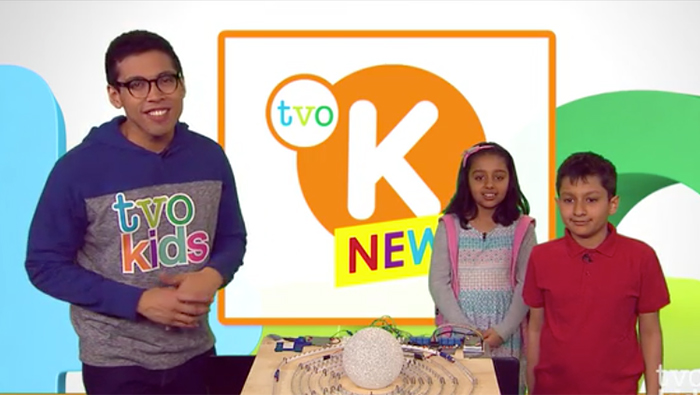
Press TVO.org to access the full video transcript for TVOK News - Trappist-1 ExoPlanetary System.
TVO dot org (Opens in a new tab)After reading or listening to the transcript of the interview, go back to your KWL chart and complete the final column – What I learned.
- If you had to change the KWL chart to make it more effective as a reading tool, what would you suggest?
Action
Introducing the KWHLAQ chart
In the Minds On section, you discussed the purpose and effectiveness of using a traditional KWL chart. You were also asked to consider how you might make the KWL chart more effective. Compare the two charts and discuss how the second chart might be more useful to intermediate learners:

In the Minds On section, you were introduced to the “Trappist-1 Exo-Planetary System” by Arushi and Artash. You completed the traditional KWL chart with what you knew and learned about this topic. Now, you will have a chance to work with this version of the chart and determine its effectiveness. Use the following KWHLAQ Chart to organize your ideas. You can also complete this activity in your notebook or use the method of your choice.
When completing the organizer, determine and record your thoughts for the first three columns before you read or listen to one of the two reading pieces that follow.
|
K (What do I know?) |
W (What do I want to know?) |
H (How do I find Out?) |
L (What have I learned?) |
A (What action do I take?) |
Q (What new questions do I have?) |
|---|---|---|---|---|---|
The first article is about the Ontario Science Centre's vision, planning process, and opening.
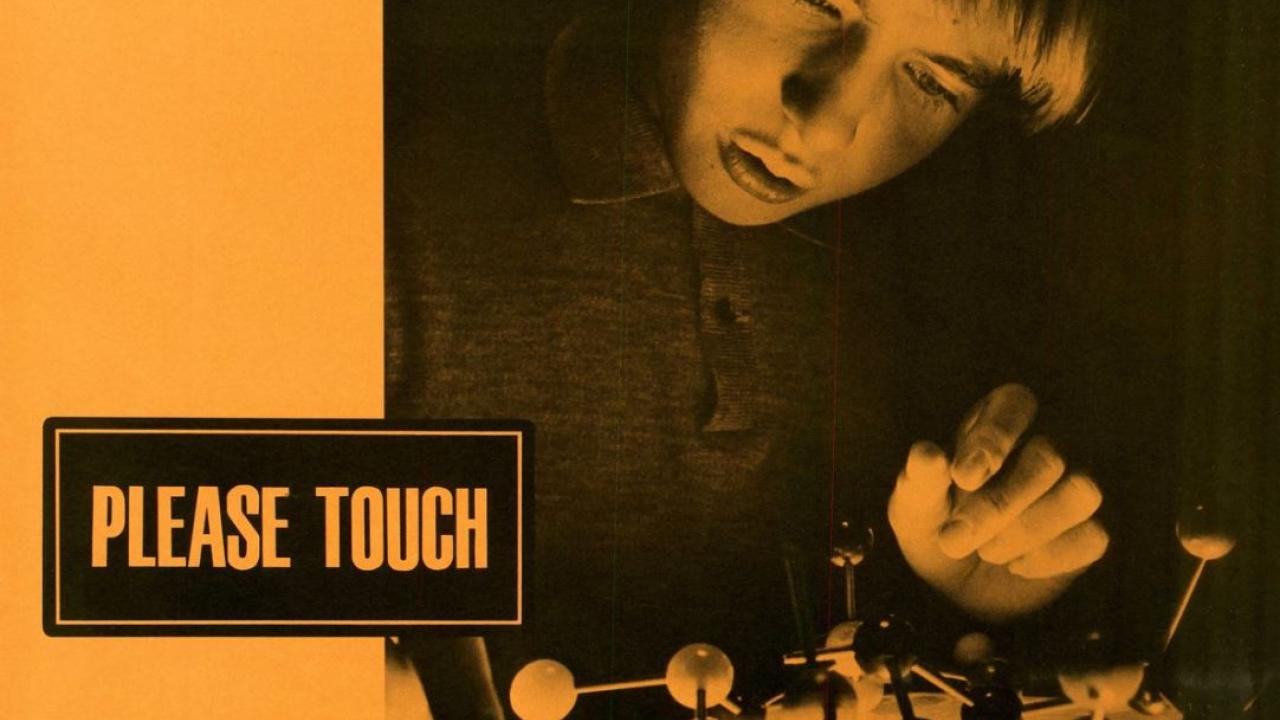
Press TVO.org to access ‘Please touch everything’: Inside the opening of the Ontario Science Centre.
TVO dot org (Opens in a new tab)The second option is a transcript from a TVOkids show. This episode is about tagging Lake Trout to determine the health of the species.
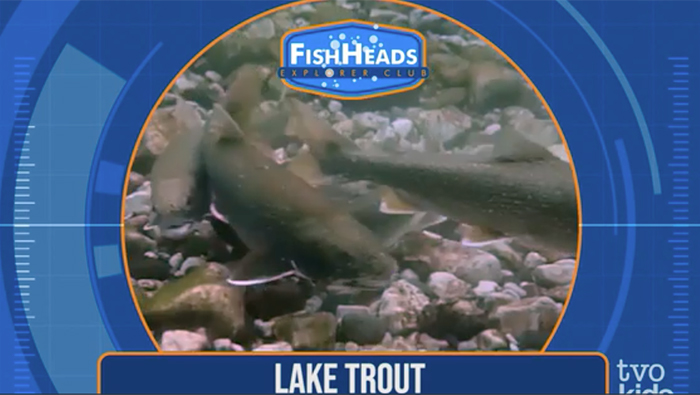
Press TVO.org to access the full video transcript for TVOK Leo’s Fishheads: Lake Trout.
TVO dot org (Opens in a new tab)After you have completed the reading or listening, return to your KWHLAQ chart and record your learning and questions in the final three columns.
- How was this experience different than the Minds On task with the traditional KWL chart?
- Which chart do you feel is more effective as a tool for reading or listening? Why?
- How does organizing your knowledge, questions, learning and actions help you make sense of what you are reading or listening to?
Independent task
Research a topic of your choice and select one or more articles about your topic. Your topic can be about a sport that you enjoy, your favourite season, a country that you would like to visit, or any topic that is of interest to you.
Before you examine the passage, please review the success criteria about why you are using a KWHLAQ, as a reader. What purpose does a chart like this serve?
I am able to…
- activate previous knowledge
- develop deeper knowledge of the topic by confirming or correcting previous understandings
- monitor and set a purpose for my own learning
- plan how to locate information
- reflect on what I have learned and consider what I will do with that knowledge
The KWHLAQ chart in action
Before reading the article, consider the title of the article.
Use the title and the topic to fill in the different parts of the chart. Use the following KWHLAQ Chart to organize your ideas. You can also complete this activity in your notebook or use the method of your choice.
- What do you already know about your topic?
- What do you wonder?
|
K (What do I know?) |
W (What do I want to know?) |
H (How do I find Out?) |
L (What have I learned?) |
A (What action do I take?) |
Q (What new questions do I have?) |
|---|---|---|---|---|---|
Once you have had a chance to record your thoughts and questions, examine the article with a partner, if possible. As you read, be sure to record any new thoughts, ideas, information or questions you might have.
Reflecting on your learning, and considering the information that was presented, do you have any residual questions? Record them in your organizer.
Consolidation
A deeper understanding
You have examined one or more articles and have used a graphic organizer to ask questions and monitor your comprehension of the material presented. The column labelled with an “A” asks you to consider what you can now do with the information you have accumulated. Now that you have a deeper understanding about your selected topic, what might you do with that information?

Use the KWHLAQ chart you were working with for your independent task and research additional information about your topic.
Record your responses to the following questions in an audio clip, in a notebook, or on a computer.
- How was this experience of researching, locating your own reading or listening material different or enhanced by using the KWLHAQ chart?
- How does organizing your knowledge, questions, learning and actions help you make sense of what you are reading or listening to?
Reflection
As you read the following descriptions, select the one that best describes your current understanding of the learning in this activity. Press the corresponding button once you have made your choice.
I feel...
Now, expand on your ideas by recording your thoughts using a voice recorder, speech-to-text, or writing tool.
When you review your notes on this learning activity later, reflect on whether you would select a different description based on your further review of the material in this learning activity.
